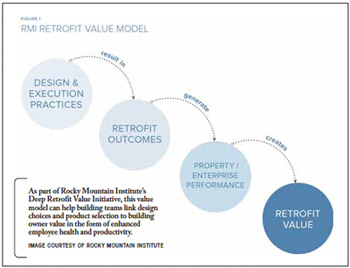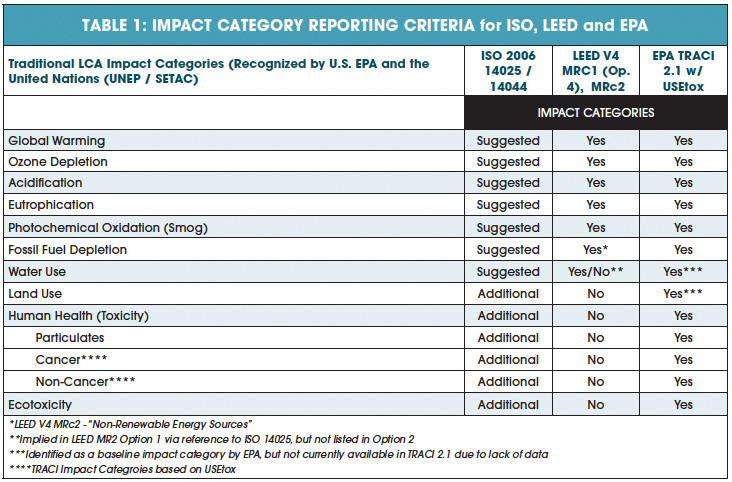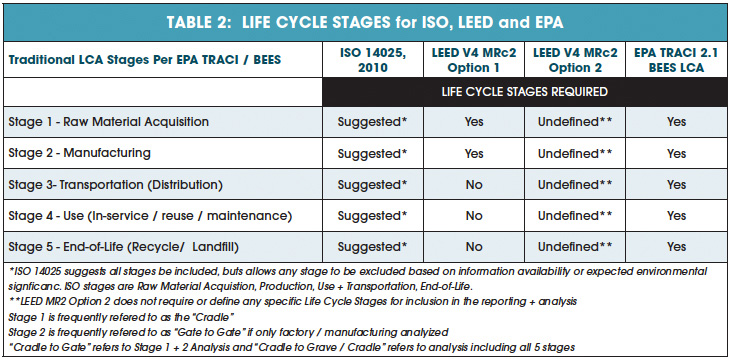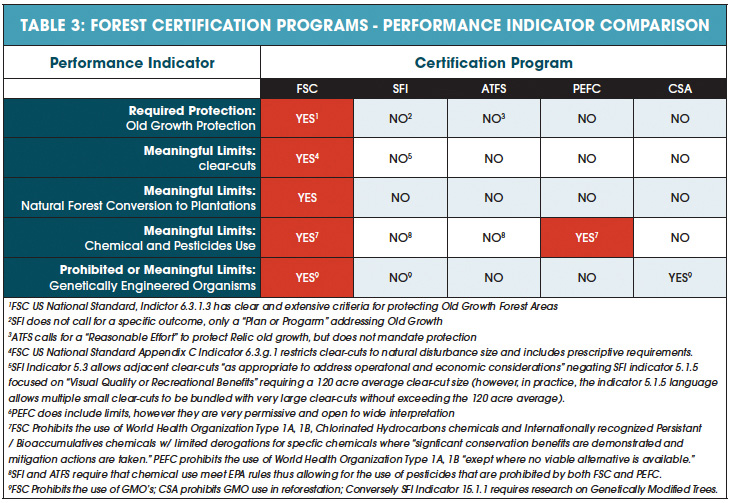Wood and LEED v4
Full Disclosure?
Getting back to the topic of product transparency, one concern raised by forest product manufacturers, not to mention manufacturers across the entire building products industry, has been protecting proprietary information throughout the product disclosure process.

As part of Rocky Mountain Institute’s Deep Retrofit Value Initiative, this value model can help building teams link design choices and product selection to building owner value in the form of enhanced employee health and productivity.
“Our products are, for the most part, derived from nature, and there is likely little that is unknown or confidential,” states Glowinski. “Some of our engineered products do use glues and resins, but those are obtained commercially and disclosure of any of their impacts is part of our EPD.”
Of course, USGBC has taken this into consideration and is offering a number of prescriptive paths toward compliance such as partial disclosure of building product ingredients.
For example, building product manufacturers can choose to develop and publish HPDs, which publish all of the product’s ingredients along with associated hazards, or they can choose to disclose a portion of the ingredients while still identifying any health hazards associated with the unreported ingredients.
However, White isn’t very impressed with manufacturers opting to hide behind the “proprietary screen.” And while she acknowledges that HPDs are a decent alternative, still, they are not on the level of EPDs in terms of the information they provide.

Table courtesy of Douglas Pierce/Perkins+Will
A comparison of impact categories used to evaluate building products reveals that U.S. EPA standards are more rigorous than ISO and LEED v4 standards.
“HPDs are great tools with a limited impact boundary,” explains Pierce. “They help make toxic compounds contained within the product transparent. However, it is important to know that HPDs do not cover the expanded life-cycle impacts of a product, and they do not quantify the actual exposure levels from a toxin contained in a product.”
In addition, HPDs can be rather difficult to put together, particularly when it comes to collecting the full compendium of required data for things like binders and adhesives, not to mention the substantial costs being absorbed by manufacturers. For example, manufacturers have to report extraction locations and the extent to which their suppliers are committed to responsible practices for 90 percent of their products’ raw materials.
For example, manufacturers have to report extraction locations and the extent to which their suppliers are committed to responsible practices for 90 percent of their product’s raw materials.
“Transparency is very challenging, and even manufacturers who approach HPDs enthusiastically are finding it difficult to get information from their suppliers,” she says.
In terms of evaluating one’s own manufacturing process, one useful tool is GreenScreen for Safer Chemicals, which is a method to help manufacturers perform comparative chemical hazard assessments, identify chemicals of high concern and safer alternatives and ultimately make more informed choices regarding product ingredients. (For more, see sidebar, “Utilizing GreenScreen for LEED Credits,” below.) “GreenScreen is used to provide data for HPDs, and the information is invaluable,” confirms White.
However, one thing which won’t be reflected in HPDs is the fact that some chemicals, once applied to wood products, change into environmentally harmless substances through the manufacturing process.
One hot-button issue associated with the USGBC’s bold move toward product transparency is the fact that LEED’s initial foray into this arena is rewarding product manufacturers for simply reporting ingredients, regardless of how eco-friendly those ingredients ultimately are.
Toward that end, Grant cautions, “Let the buyer/specifier beware.”
True, many are applauding the USGBC for this important first step toward this largely unchartered territory of product disclosure, but Grant points out that transparency has a ways to go before it fully delivers what is being promised.

Table courtesy of Douglas Pierce/Perkins+Will
A comparison of impact categories used to evaluate building products reveals that U.S. EPA standards are more rigorous than ISO and LEED v4 standards.
At this time, “Transparency tools can be used for the worst products in the world, and, unless the market is sufficiently sophisticated to interpret the data that is presented and avoid the product, it will make no difference in terms of market transformation,” says Grant.
Voicing its concern about this issue, FSC published a statement of consensus— with signatures from a select group of sustainable design leaders—stating that disclosure tools typically do not account for the site-specific impacts of raw material extraction, distribution, manufacturing and disposal, relying instead on aggregated data.
“For example, an LCA might indicate that an assembly of products performs 15 percent better than a baseline in certain impact categories (e.g., eutrophication, acidification),” reads the statement. “This same assembly could also contain products with very negative raw material extraction impacts (e.g., ecosystem disruption—an impact category outside the boundary of almost all LCA tools), with the consequence that an assembly whose net impacts may be significantly negative could qualify for LEED points. Because of these shortcomings, EPDs, if solely based on LCA, may be seriously misleading in regard to true product benefits and liabilities.”
To help make the system more effective, Bowyer suggests following the lead of the GBI Green Globes rating system, which requires building teams seeking points to actually read and compare EPDs for functionally equivalent products.
“I completely agree that product ingredient disclosure alone does not protect environmental health,” states Claudio. “Even when following due diligence displaying the product content, there is insufficient health effects information on many ingredients.”
Pierce also points out that an EPD’s failure to report on health impacts does not mean that they don’t exist. “If an EPD does report on health, proceed to use the information with caution as the ISO EPD criteria leave a lot room for judgment on the part of the EPD providers to determine what is important to include and what is not when reporting on health impacts.”
Criticism aside, many designers and consultants are impressed with LEED’s initial movement in this direction.
“EPDs and HPDs have the potential to better inform all of us about the impacts of products and to continue the transformation toward greener product development,” states Pierce. “This first step into market scale transparency is essential.”
“Although we began development of our EPDs before we even knew the USGBC was even contemplating EPD recognition, we applaud them for including product disclosure in their latest version of LEED,” echoes Glowinski. “It is disclosure itself that will finally allow designers to avoid misunderstanding; for the first time they will know the impacts and have the ability to use simple spreadsheets or available tools, such as the Athena Eco-Calculator, to make comparisons.”
Although USGBC agrees that current LEED v4 product disclosure credits were set up to begin propelling the building products industry toward transparency, and that they will surely evolve into more rigorous standards, Buffaloe defends the current credits.
“The disclosure credit options bring awareness to the most rigorous and accepted mechanisms for environmental and health disclosure,” she says. “The credit intent is to empower designers to make material decisions based on increased information available and therefore sidestep the issue of unsubstantiated environmental claims with accurate transparency.”
To assist designers with interpreting this product information, a number of programs have evolved to help specifiers identify which products are truly sustainable.

Information from "FSC+Better? What is the Status of the Wood Certification Gap?" by Perkins+Will Published in the Summer 2012 Edition of Trim Tab Magazine HTTP://BIT.LY/18MSV7F
After comparing five forest certification programs—Forest Stewardship Council, Sustainable Forest Initiative, American Tree Farm System, Programme for the Endorsement of Forest Certification and Canadian Sustainable Forest Management—on the basis of five standards, Perkins + Will's Douglas Pierce found FSC to be the most rigorous in all areas.
Among the programs offering this valuable assistance are the following:
- GreenSeal—Developing life cycle-based sustainability standards for products, services and companies, GreenSeal also certifies products and companies meeting those standards.
- Cradle to Cradle—The Cradle to Cradle Certified Product Standard is issued by the Cradle to Cradle Products Innovation Institute based on environmental standards developed by sustainable industry pioneers William McDonough and Michael Braungart.
- Declare—Described as a nutrition label for building products, this Living Building Challenge program requires manufacturers to disclose their products’ ingredients to ensure that they do not contain Red List chemicals or materials.
- GreenSpec—Managed by Building- Green, GreenSpec is an extensive database of sustainable products. “Building- Green actually researches the materials themselves before recommending them, without compensation from manufacturers, so I consider their information to be very reliable,” says White.
- SMaRT—As an accredited American National Standards Institute standard developer, The Institute for Market Transformation to Sustainability awards its SMaRT Consensus Sustainable Product Standards to products which meet a wide range of criteria.
Borgesi projects that the industry’s drive toward transparency will eventually force the majority of players to get with the program.
“No product manufacturer will want to be the one that is still using environmentally insensitive products or processes when all the other manufacturers have made a commitment to improve,” she predicts. “Sustainable buildings are no longer an option; they are a requirement. And if manufacturers want their products to be used in construction, they will have to get onboard.”









